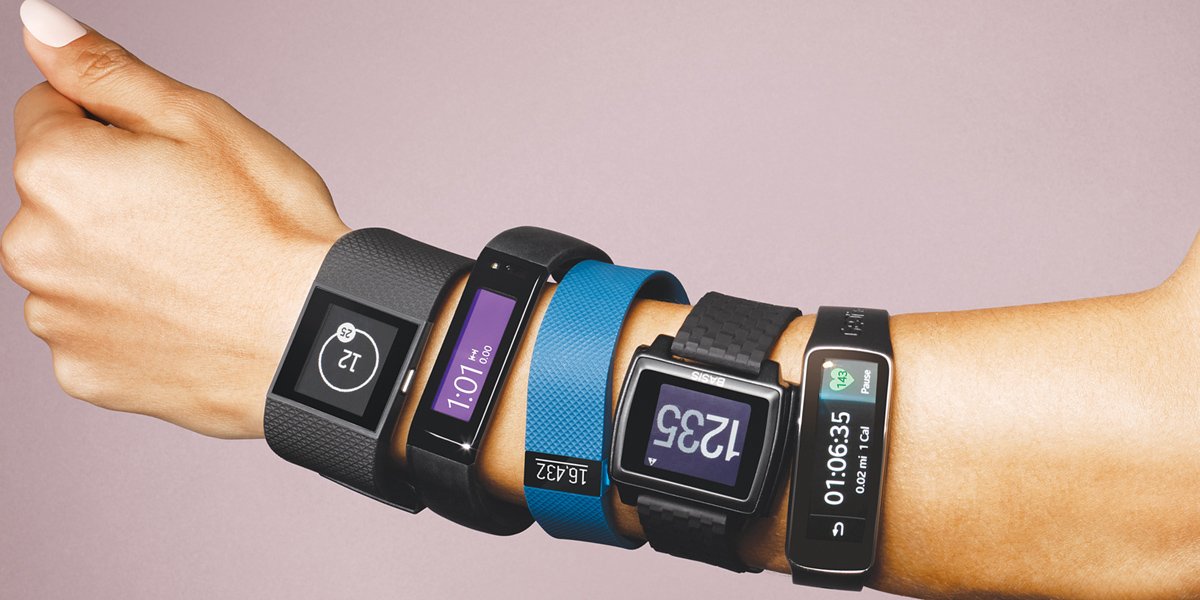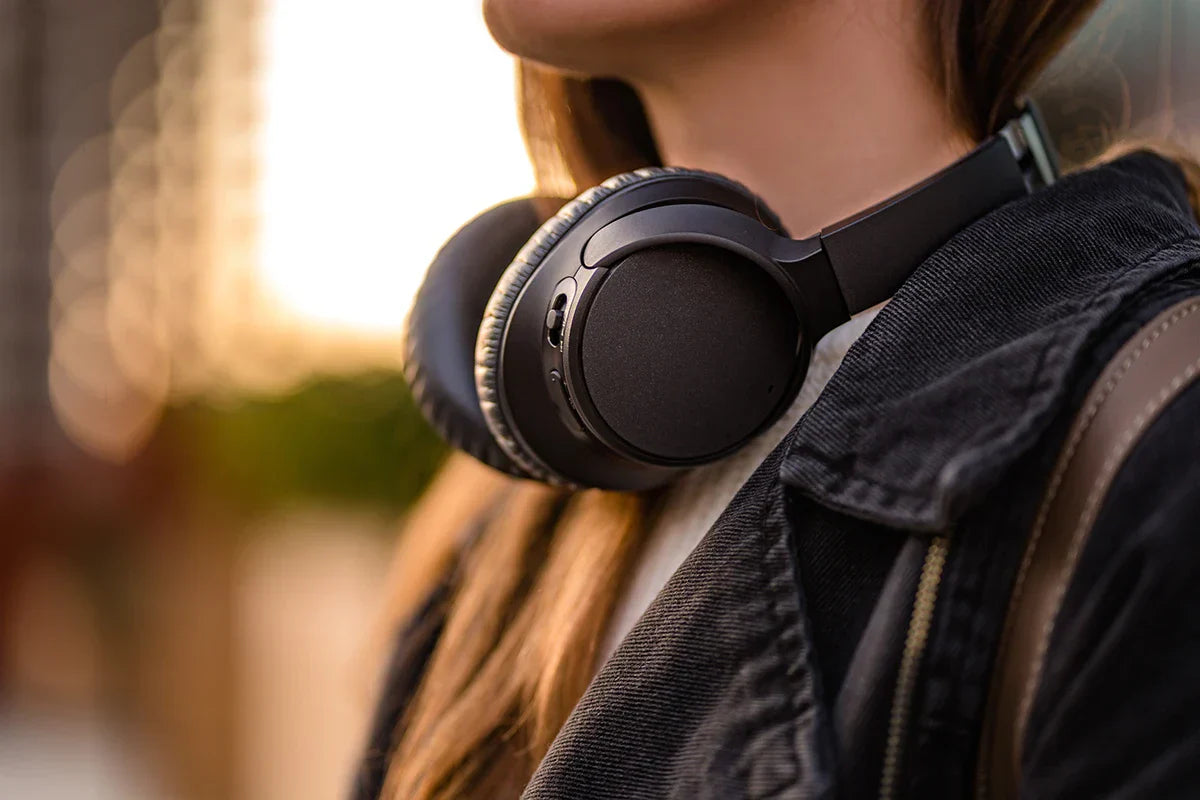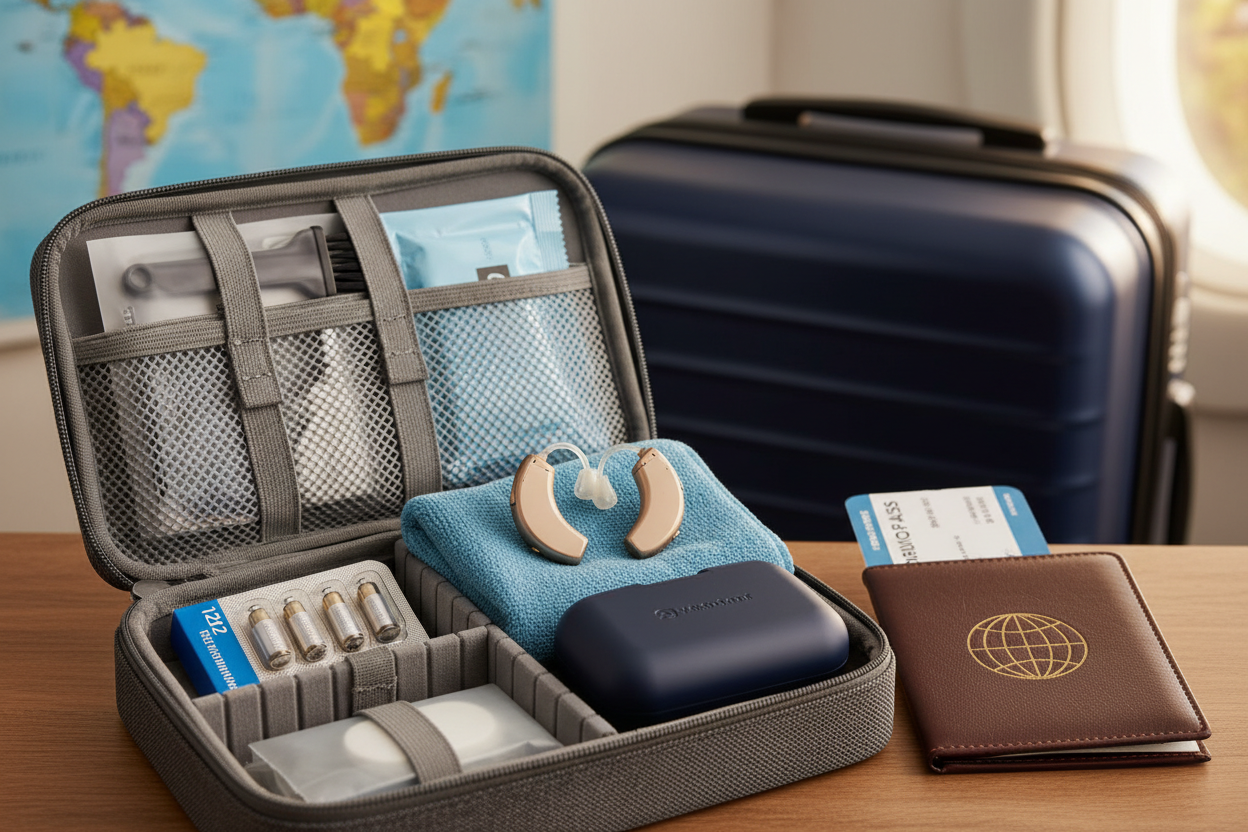Q1: What types of devices are we talking about?
Hearing aids and fitness trackers/smartwatches are distinct but increasingly overlapping in features. Let’s clarify.
Hearing Aids
A hearing aid is a medical device designed to amplify and process sound for persons with hearing loss. Modern devices incorporate advanced digital signal processing, Bluetooth connectivity, smartphone apps, wireless streaming, and even motion sensors. For example, some hearing aids now monitor steps, social engagement, falls, and other wellness metrics.
Fitness Trackers / Smartwatches
These are consumer-wearable devices (wrist-worn or otherwise) that monitor physical activity (steps, heart rate, motion), often connected to a smartphone or cloud service. Many also support notifications, apps, Bluetooth, and WiFi connectivity.
So the overlap is: both device classes use wireless connectivity, sensors, body-worn form factors, and increasingly integrate with smartphones and each other.
Q2: What does “interfere” mean in this context?
When we ask “Do hearing aids interfere with fitness trackers or smartwatches?” it could mean various things:
-
Does using a fitness tracker/smartwatch disrupt the functioning of a hearing aid (e.g., sound quality, connectivity, Bluetooth streaming)?
-
Conversely, can a hearing aid interfere with a smartwatch/fitness tracker’s performance (e.g., step counting, motion sensing, Bluetooth sync)?
-
Are there electromagnetic/ wireless-protocol conflicts between these devices when worn simultaneously?
-
Are there compatibility issues (pairing, apps, Bluetooth channels) when using both devices together?
So “interference” is both technical (wireless, sensors) and functional (usability, connectivity, data accuracy).
Q3: Is there documented evidence of interference between hearing aids and fitness trackers / smartwatches?
Yes — though the evidence is limited and mixed. Here are what the sources say:
Evidence that interference can occur
-
On the consumer forum for the Apple Watch and MFi (Made for iPhone) hearing aids: a user reported:
“Ever since I got these Halo 2 hearing aids, I will occasionally get a rhythmic clicking sound … On talking with Starkey tech support, they told me that it is a problem with my Apple Watch interfering with the Bluetooth of the hearing aid.”
This suggests that the Apple Watch may have caused electromagnetic or Bluetooth-channel interference with hearing aids.
-
A hearing-aid‐clinic FAQ states below, this implies that devices emitting electromagnetic fields or wireless signals can disturb hearing aids:
“Wireless connectivity … hearing aids can sometimes be affected by or interfere with other electronic devices. … Devices such as cell phones, laptops, routers … may cause buzzing or static in hearing aids.” (melodyaudiology.com)
-
A user-forum post about Bluetooth interference with hearing aids:
“Keep in mind that the BT has multiple protocols, … Bluetooth interference is everywhere.” (Hearing Aid Forum)
This again backs up the idea that wireless congestion/ interference may affect hearing aids.
Evidence that interference is not a major issue (or is manageable)
-
Many hearing-aid manufacturers discuss Bluetooth connectivity, wireless streaming etc., but do not present widespread warnings about interactions with fitness trackers/smartwatches. For example, the Phonak blog notes that Bluetooth (2.4 GHz) is used by many devices and can face interference, but the emphasis is on connection practices rather than specific smartwatch/hearing aid conflicts. (audiologyblog.phonakpro.com)
-
Articles on wearable technology in hearing health emphasize integration and compatibility (rather than major interference problems). For instance:
“If you already use a smartwatch, fitness tracker or voice assistant, your audiologist can explain which hearing aids are compatible and how they …” (earsutah.com)
-
The integration of hearing aids with fitness trackers is often described positively (i.e., additional wellness tracking features built into hearing aids) rather than as a source of major conflict. (hearingsolution.net)
Summary: Yes, interference can occur — particularly in certain wireless / Bluetooth pairing scenarios — but it appears to be the exception rather than the rule, and many modern systems are designed with compatibility in mind.
Q4: What are the main technical mechanisms by which interference might happen?
Understanding the underlying mechanisms helps clarify when problems are likely and how they can be mitigated.
1. Wireless / Bluetooth frequency congestion
Modern hearing aids often use Bluetooth (Classic or Low Energy, or proprietary wireless) to stream audio, connect to smartphone apps, or communicate between ears. (audiologyblog.phonakpro.com)
Smartwatches/fitness trackers also use Bluetooth (and sometimes WiFi, NFC, ANT+) to sync data with smartphones or other devices.
Since both device types rely on similar frequency bands (e.g., 2.4 GHz for Bluetooth) in close proximity (wrist + ear), it increases the risk of signal collisions, latency, dropped packets, or disrupted streaming.
For example:
“Distance and interference are two key aspects to keep in mind … Bluetooth devices will try to overcome these aspects by increasing the power output … or switching channels which may be less prone to interference.” (audiologyblog.phonakpro.com)
2. Electromagnetic interference (EMI) / body-worn proximity
Hearing aids are tiny electronic amplifiers often worn behind or in the ear. They may pick up or suffer from electromagnetic fields emitted by other devices (phone, smartwatch, etc.). While it’s less common with well-designed devices, it remains a possibility. (melodyaudiology.com)
3. Sensor overlap and motion detection interference
Some advanced hearing aids now include motion sensors (accelerometers, gyroscopes) for features like step counting, fall detection, or tracking wear-time/engagement. (Hearing Tracker)
Simultaneously, a smartwatch or fitness tracker tracks motion from the wrist. In theory, wearing both could lead to redundant sensors, conflicting data streams, or potential mis-counts if the algorithms assume isolated sensor data.
4. Software/app incompatibility / pairing conflicts
Even if hardware interference is minimal, issues may arise from software side:
-
Hearing aid app and smartwatch app both pairing to the same phone, causing resource contention.
-
Proprietary wireless protocols (e.g., hearing aids using MFi, ASHA, or manufacturer-specific wireless) that may not behave well when a smartwatch tries to access similar resources.
For instance, a source states:
“Certain smartwatch brands will pair easily with hearing aids, but others don’t have the option. It is always best to double-check your smartwatch compatibility before purchasing.” (Ear, Nose & Throat Consultants)
5. Physical geometry / placement issues
Because the ear and wrist are fairly close, wearable devices could physically interfere (e.g., the wrist-band interfering with the hearing-aid’s wireless path, especially if the user crosses arms, etc.). Also bodies can attenuate wireless signals (Bluetooth signals are absorbed by the human body).
Q5: Under what circumstances are hearing aids most likely to interfere with a smartwatch/fitness tracker (or vice versa)?
Here are risk factors and scenarios where problems are more likely:
-
Older hearing aids or trackers: Legacy hearing aids with less advanced wireless protocols or sensors may be more susceptible.
-
Use of multiple wireless devices simultaneously: If you have a smartphone, tablet, hearing aid, smartwatch, Bluetooth headphones, etc., all in use close together — the wireless “crowding” increases chances of interference.
-
Close proximity between devices: If the smartwatch and hearing aid are extremely close (e.g., wrist touching cheek/ear) or if the user’s hand moves in such a way to bring wrist and ear near each other, possibly interfering with signal paths.
-
High-activity motion scenarios: When exercising vigorously with both devices active (hearing aid motion sensors + smartwatch step/fitness sensors) there might be overlap or competition in sensor readings.
-
Conflicting pairing/pairing to different devices: For example, if your smartwatch tries to stream audio or mic data while your hearing aid is streaming audio, they could fight for Bluetooth bandwidth.
-
Non-compatible device ecosystems: Some hearing aids have proprietary wireless protocols (MFi for iPhone, ASHA for Android) and some smartwatches may not be fully compatible. Prior user reports showed Apple Watch + hearing aid Bluetooth interference. (Apple Support Community)
-
Electromagnetic noisy environments: Gyms, exercise machines, large metal equipment, heavy wireless usage areas might accentuate interference.
-
Sensor overlap without calibration: If both wrist and ear sensors count steps independently without synchronization, you may get inconsistent or duplicated data.
Q6: Conversely — how do many hearing aids and trackers successfully co-exist? What features or design factors help reduce interference?
Despite the potential issues above, many users wear hearing aids and smartwatches/fitness trackers without major problems. Here’s why:
A. Modern wireless design and protocols
Hearing-aid manufacturers are increasingly aware of wireless interference issues. For example, articles mention that Bluetooth LE (Low Energy) is used for remote control, while Bluetooth Classic is used for audio streaming.
More modern hearing aids support robust wireless channel switching, optimized antennas, interference-mitigation strategies.
Fitness trackers similarly use efficient, often low-power wireless transmissions.
B. Built-in wellness tracking in hearing aids
Interestingly, rather than being competing devices, hearing aids themselves are evolving to include fitness/tracker features (steps, motion, social engagement, fall detection) so the wearer may not need a separate tracker for some functions.
C. Professional guidance and compatibility checks
Audiologists and hearing specialists increasingly consider wearable-device compatibility. Consulting a hearing-care professional helps ensure you choose hearing aids compatible with your mobile/smartwatch ecosystem, and configure Bluetooth appropriately. For example:
“If you already use a smartwatch, fitness tracker … your audiologist can explain which hearing aids are compatible and how they…” (earsutah.com)
D. Firmware updates and app ecosystems
Manufacturers issue firmware updates to hearing aids to improve wireless performance, reduce interference, and update apps for better co-device behavior. Keeping your devices and apps updated reduces many glitches.
E. Wearing habits and smart usage
Users can reduce interference by:
-
turning off unused Bluetooth devices
-
pairing one device at a time
-
ensuring smartphone is near the hearing aid/ smartwatch when syncing
-
avoiding stacking devices too closely (e.g., wrist directly at ear) during heavy use
-
using wired (or alternate) connections when necessary
These “good habits” minimize interference risks.
Q7: What kinds of problems might users notice when interference happens?
If your hearing aid and fitness tracker/smartwatch interfere with each other, you might observe signs such as:
-
Buzzing, clicking, static noise in the hearing aid when the smartwatch is active or sending data. For example, the Apple Watch + hearing aid user described “clicking sound” triggered by the watch.
-
Dropped or unstable Bluetooth streams: Hearing aid stops streaming audio or connection to smartphone/app drops.
-
Inconsistent step/activity counts: If both hearing aid and tracker count steps, you may see divergent numbers or odd duplicates.
-
Delayed or missing sensor data: Fall detection or motion sensing may mis-register if the ear sensor and wrist sensor are both triggering similar events.
-
Inability to pair or connect one device when the other is active: For example, you turn on your smartwatch and hearing aid loses connection to its app or audio source.
-
Reduced battery life: Wireless interference may cause hearing aid or tracker to boost power or re-attempt connections, draining battery faster.
-
Physical discomfort or positioning issues: The user may feel the wrist device is obstructing the hearing-aid antenna or cause subtle signal attenuation when the wrist is near the head.
In many cases, these issues are mild and intermittent — but if persistent, they may degrade the experience of both devices.
Q8: How can you minimise or avoid interference between hearing aids and fitness trackers/smartwatches?
Here are practical tips and best practices:
1. Choose compatible devices
-
When selecting a hearing aid, ask the audiologist: Will this hearing aid work well with my smartwatch/fitness tracker brand and phone OS? As one source says:
“Certain smartwatch brands will pair easily with hearing aids, but others don’t have the option. It is always best to double-check your smartwatch compatibility before purchasing.”
-
If you already own a smartwatch, check the manufacturer’s support pages for hearing-aid compatibility.
2. Update firmware/apps regularly
-
Ensure your hearing aid has the latest firmware.
-
Ensure your smartphone, smartwatch, and any companion apps are up to date.
-
Many connectivity problems stem from outdated software.
3. Limit simultaneous wireless device traffic
-
Turn off Bluetooth or WiFi on devices you’re not using.
-
If you’re streaming audio to your hearing aid, maybe pause step-tracking sync or notifications on smartwatch (if feasible) to reduce signal congestion.
-
Avoid having multiple audio-streaming devices active at once near your hearing aids.
4. Optimize device placement and wrist/ear geometry
-
Avoid placing your wrist device directly adjacent to your hearing aid if possible.
-
On occasions when you’re using the wrist device heavily (exercise, spinning class), consider headphone alternatives or adjust positioning.
-
Keep smartphone near ear hearing aid during streaming for stronger signal path.
5. Use motion sensor overlap smartly
-
If your hearing aid tracks steps/engagement, you may not need a separate tracker. If you wear both, be aware that the data may overlap, and you should check which data source you rely on.
-
Use the app of each device to disable duplicate features (if possible) to avoid confusion or redundancy.
6. Work with your audiologist
-
If you notice buzzing, dropouts, pairing failures when wearing both devices, mention to your audiologist/technician. They can check hearing-aid settings (wireless channel, shielding, firmware) and may perform a “wireless environment scan”.
-
Some hearing-aid fittings include a check for Bluetooth interference. A professional may adjust settings or recommend accessory use.
7. Consider alternatives when needed
-
If interference is persistent and unresolved, you might:
-
Use a wired accessory (phone to hearing aid via streamer) instead of Bluetooth for short periods.
-
Temporarily disable the smartwatch during critical hearing-aid audio streaming (e.g., a meeting or conversation).
-
In rare cases, switch to a different hearing-aid model or accessory optimized for dense wireless environments.
-
Q9: Are there specific brands or models known for better compatibility with fitness trackers/smartwatches?
Yes — while I won’t endorse specific models, here are some features/brands to look for (and what sources indicate).
Feature indicators of good compatibility
-
Hearing aids that support standard Bluetooth Classic + Bluetooth LE/LE Audio rather than proprietary closed protocols. The Phonak blog explains:
“We use two types of universal Bluetooth connections … Bluetooth Classic and Bluetooth Low Energy (LE)”
-
Hearing aids that are explicitly marketed as “healthable” or wellness-tracking (steps, motion) which suggests strong internal sensor support and less need for a separate tracker.
-
Hearing aids with app-based control and integration with smartphones; such features suggest robust wireless connectivity and compatibility.
-
Hearing-aid manufacturers who provide compatibility statements about pairing with smartphones and wearables.
Example brands/models (for reference)
-
Starkey: Their Livio AI / Genesis AI hearing aids include motion sensors, step tracking, and fall detection.
-
Phonak: Their Audéo Fit / Paradise / Lumity models include heart-rate tracking in at least one model, plus step/distance monitoring.
-
Signia: Their AX series hearing aids include My WellBeing app tracking steps, activity, social engagement.
Smartwatches / wearables
While I have less data on specific smartwatch models vs hearing aid interference, it’s wise to use established smartwatch brands with mature Bluetooth ecosystems and known hearing-aid compatibility (Apple Watch, certain Wear OS watches, Garmin, etc.). Before purchase, check forums or manufacturer support for hearing-aid interference reports.
Q10: What about the fitness tracker side? Can hearing aids interfere with smartwatch/fitness tracker functioning (e.g., steps, heart rate)?
Yes — though less commonly discussed — there are possible issues on the tracker side too:
-
Duplicate or conflicting motion data: If you wear a hearing aid with built-in motion sensors and a wrist tracker, the wrist tracker may count steps/movements differently (or attribute wrist motion while the ear sensor picks up body motion). This might lead to inconsistent or inflated counts.
-
Wireless interference delaying or dropping tracker sync: If a hearing aid is streaming audio and heavy wireless usage is ongoing, the smartwatch may struggle to sync or upload data in real time.
-
Placement issues: The wrist tracker may assume the primary motion is wrist motion; if the user has hearing aids with motion sensors detecting fall or motion events from head movement, the algorithms might register differently than expected.
-
Battery drain: The wrist tracker may attempt to "compensate" for missed data by increasing sensor sampling or syncing more frequently, leading to faster battery drain.
That said, most modern fitness trackers are designed to function independently of hearing aids. The key is avoiding unnecessary overlap or redundancy and ensuring both devices are paired and used optimally.
Q11: Are there particular use-cases (exercise, gym, swimming, travel) where interference issues are more likely?
Yes — some situations increase the risk of interference or connectivity problems.
Exercise / Gym
-
During workouts (treadmill, gym machines, spinning bikes) you may use both devices intensively: the hearing aid may stream music or trainer instructions, the smartwatch may track heart rate, motion, audio cues.
-
Gyms can be heavy in wireless/magnetic interference (lots of metal, equipment, other users with Bluetooth devices).
-
Sweat, movement, watches shifting positions may impact signal integrity.
Outdoor Activity / Running
-
At high speed or motion (running/jogging) the wrist and body movement may cause changes in signal path (e.g., wrist device swinging, head turning).
-
If both devices try to use motion sensors simultaneously, step counting might vary or conflict.
Travel / Airplane / Public Transport
-
Many wireless networks, hotspots, Bluetooth devices around you: higher wireless “noise floor”.
-
Hearing-aid streaming + smartwatch data sync might both be active; more chance of interference.
Swimming / Waterproof scenarios
-
Some hearing aids are waterproof or water-resistant; some fitness trackers are also. But the wet environment may alter signal paths or body placement (wrist may be near ear when in water). In addition, some wireless features may be disabled.
-
In such contexts, it might be wise to disable the streaming Bluetooth to hearing aid and rely on direct audio or none, to minimise wireless conflict.
Meetings / Quiet environments
-
If you wear your hearing aids and want undisturbed hearing aid audio streaming (e.g., for a meeting, call) you may wish to turn off smartwatch notifications or syncing, thereby reducing potential wireless traffic and interference.
Q12: What are the best questions to ask your audiologist or hearing-care professional if you wear a smartwatch/fitness tracker?
When you visit your audiologist (or before buying new devices), consider asking:
-
Compatibility
-
“Is this hearing aid compatible with the smartphone/smartwatch (brand/model) I use?”
-
“Are there known issues when wearing a smartwatch simultaneously with this hearing aid model?”
-
-
Wireless protocols & interference mitigation
-
“What wireless standard does the hearing aid use (Bluetooth Classic, LE, Proprietary)?”
-
“Has this model been tested in high-wireless-traffic environments (gyms, public transport)?”
-
“Are there settings or firmware updates to optimise co-use with wearables?”
-
-
Sensor overlap & wellness features
-
“Does this hearing aid include motion/step/fall sensors? If yes, will that duplicate my smartwatch features?”
-
“Should I disable step counting on one device to avoid conflicting data?”
-
-
Streaming & use case advice
-
“If I stream audio to the hearing aid (music/podcast) and use the smartwatch simultaneously, are there known drop-outs or battery issues?”
-
“During exercise, should I alter settings (e.g., disable streaming, disable certain notifications) to avoid interference?”
-
-
Troubleshooting & environment tips
-
“What should I do if I hear buzzing/clicking/static while the smartwatch is active?”
-
“Are there environmental factors (gym equipment, lockers, metal walls) that make interference more likely?”
-
“If I experience issues, can you adjust the settings remotely or do I need to come in?”
-
-
Updates & maintenance
-
“How often should the hearing aid firmware/app be updated?”
-
“Does the smartwatch/fitness tracker brand need specific settings changed when paired with a hearing aid?”
-
Q13: What are the trade-offs or limitations to be aware of when using both devices together?
Here are some trade-offs to consider.
Battery Life
Streaming audio to hearing aids uses battery power in both the hearing aid and the source device. If you also have your smartwatch syncing constantly (heart-rate, steps, notifications), both devices may drain faster. You might have to charge more often or choose one device to be “active” at certain times.
Data Overlap & Clarity
If both devices track motion/steps/sleep, you may end up with duplicate data streams. This can be confusing: which number is the “truth”? Also, relying on both devices may hide if one is malfunctioning.
Cost & complexity
Wearing both a high-end hearing aid and a premium smartwatch may have cost implications. Also, managing pairing, updates, settings can require some tech savviness. Users less comfortable with technology may experience setup frustration.
Performance in crowded wireless environments
Even well-designed devices may degrade in extremely wireless-dense or electromagnetic noisy environments (gyms, industrial sites, aircraft) because of physical limitations of RF/wireless propagation. This is a trade-off of current technology.
Sensory distraction
Wearing a smartwatch and hearing aids means you may receive more notifications, motion alerts, falls alerts etc. If not well configured, you could have alert fatigue (too many signals) or distraction during critical listening tasks (e.g., conversation). For example, a hearing aid with fall detection might ping while you’re listening to audio from smartwatch — may require customizing alerts.
Privacy & data-sharing complexity
Both devices may collect health/wellness data (steps, heart rate, social engagement). Users should be aware of how these data streams are shared, stored, and whether they should limit sharing (especially with falls alerts or social-engagement tracking built into hearing aids). While not strictly interference, it’s an important dimension of “using both devices”.
Q14: What does the research / industry outlook say about the future of hearing aids and fitness trackers working together?
The industry is definitely moving toward greater integration rather than conflict.
Convergence of functions
-
Hearing aids are increasingly being marketed as wellness devices, not just hearing-amplification devices. One article states:
“A review of the top hearing aids that double as step counters … while monitoring wear time and social engagement, heart rate data …” (Hearing Tracker)
This suggests that instead of separate fitness trackers, hearing aids themselves will increasingly cover those wellness functions — reducing the need for separate trackers and thus reducing potential interference.
Improved wireless standards
-
As Bluetooth LE Audio, Auracast, and other low-power wireless protocols mature, wireless devices will handle multiple streams more reliably, in denser wireless environments, with fewer conflicts. Hearing-aid wireless design blogs emphasise this.
-
Manufacturers will likely build hearing aids with interference-resilient antennas, better shielding, smarter firmware, and better co-device coordination (e.g., hearing aid apps aware of smartwatch wireless usage and adapting).
Better co-device ecosystems and Alexa/Google/Apple integration
-
Hearing aid manufacturers are collaborating with smartphone OS (iOS/Android) and wearable OS (watchOS, Wear OS). As interoperability improves, pairing and co-use will become smoother. For instance:
“Wearable tech and hearing aids intersect, creating devices that are more intuitive, connected and tailored to your needs than ever before.”
Some platforms may integrate hearing-aid controls in the smartwatch itself (e.g., volume, program switching, battery check) further aligning the devices. (There are anecdotal reports of using an Apple Watch to adjust hearing aid settings). (Reddit)
Emerging health sensors
-
Hearing aids might incorporate more health/wellness sensors (heart rate, body temperature, motion) removing the need for separate fitness bands. One article:
“The ear is an excellent location for measuring and monitoring biometric information … including body temperature, heart rate, respiration rate…”
-
As this happens, users who primarily want step/fitness tracking might rely on their hearing aids alone — reducing the interference potential from having two devices.
Education & standards
-
Audiologists and hearing-care professionals will increasingly include wearable-device compatibility in their counselling.
-
Standards bodies (Bluetooth SIG, FDA for hearing aids, health-wearable regulators) may issue guidelines for interoperability and minimal interference between body-worn wireless devices.
-
As of now, most hearing-aid manufacturers don’t advertise “works with all smartwatches” — but this may change.
Q15: Final summary: Do hearing aids interfere with fitness trackers or smartwatches — yes or no?
Short answer: Generally, no major interference will occur for most users if devices are reasonably modern, well-paired, and used in typical conditions. But yes, interference can occur in certain circumstances — especially with legacy devices, heavy wireless usage, poor pairing, or in noisy electromagnetic environments.
Key takeaways:
-
If you have a modern hearing aid with robust Bluetooth and your smartwatch is from a major brand, you’re very likely to be fine.
-
If you start experiencing odd buzzing, dropouts, step-count inconsistencies, or pairing issues — then interference is a real possibility.
-
Using best-practices (compatibility check, firmware updates, pairing management, limiting redundant sensors) dramatically reduces risk.
-
Going forward, integration between hearing aids and trackers is deepening — which likely means fewer “two devices fighting” scenarios and more synergistic co-use.
Bonus : Frequently Asked Questions (FAQ) at a glance
Q: I wear a smartwatch and a hearing aid — should I turn one off when using the other?
Not necessarily—but if you stream audio to your hearing aid while exercising (smartwatch tracking motion at the same time), you might want to disable non-essential notifications or streaming on one device temporarily to reduce wireless congestion.
Q: My hearing aid app and smartwatch app both show step counts — which should I trust?
Use one as your primary source. If your hearing aid has a built-in wellness tracking app (steps, wear time, engagement) and you find it accurate, you might simplify by using just that and disable duplicate tracking on your smartwatch (to avoid conflicting data and battery drain).
Q: I heard a clicking sound in my hearing aid when I wear my smartwatch — what do I do?
That could be a sign of wireless interference. Try:
-
Turning off the smartwatch temporarily (or its Bluetooth) to see if the clicking stops.
-
Move your wrist device slightly farther from your ear/hearing aid.
-
Update both devices (firmware + apps).
-
Consult your audiologist—they can check hearing-aid wireless settings or try pairing in a quieter wireless environment.
Q: Can I use my smartwatch to control my hearing aid?
In some cases yes: some hearing aids offer companion apps or integrate with smartphone OS/ accessibility features, and if your smartwatch supports those apps or remote control, you may be able to adjust hearing-aid volume or program from the wrist. But this depends on the model and ecosystem.
Q: Should I ditch my fitness tracker and rely only on my hearing aid for step/health tracking?
Possibly. If your hearing aid includes reliable step/motion tracking and you are comfortable with its metrics, you might. But if you rely heavily on advanced fitness-tracker features (GPS run tracking, detailed sleep stages, ecosystem of fitness apps), you may want to keep the tracker and manage co-use (rather than replacing it outright).






分享:
What Foods or Vitamins Support Hearing Health?
Will Medicare Advantage Plans Cover OTC Hearing Aids in 2026?